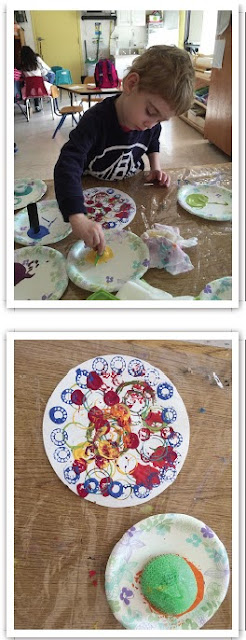Any afternoon at the Louvre there are students with easels and paints learning to read the vocabulary of the palette and brushstrokes of the likes of Delacroix or Rembrandt. It's a time-honored tradition to copy the great masters.
One day as we meandered through the galleries at the MET we watched in amazement as artists painted in full view of the watchful eye of the critical public. Later that day at the MOMA we LOL when we imagined copying the precise lines of a classic Agnes Martin or replicating the energetic drips of an iconic Jackson Pollock.
When we were invited to exhibit our work in the SFMOMA Artist Windows we knew it would be the perfect place to present our "copies" of Jackson Pollock paintings. These three "paintings" were composed of snarls of rope and ghost netting that we unraveled skein by skein then arranged as if they were abstract expressionist gestures of pours and drips of paint. We discovered it is not as easy as it looks! Our compositions were photographed then enlarged and printed on to canvas. It was a thrill to watch people as they walked by, did a double-take, then exclaimed, "Hey, I didn't know the museum had that Pollock."
Since we know the educational value of copying (not plagiarizing) to gain a deeper understanding of the creative process we were honored when students at the Lakeside Art Studio in San Francisco used our beach plastic project as inspiration of their own work with plastic. For months they collected broken toys and household plastic. After sorting it by color, they fashioned it into both permanent and impermanent, individual and group artworks. They made wreathes, hearts and abstract arrangements and using the plastic as stamps they even made prints. From the looks of it, they learned their lessons and are well on their way to being Great Masters.
Kudos to Michelle Adelsheim aka "Mrs. A", the Lakeside teaching team and the student artists for this photo essay of their remarkable work: HERE.













